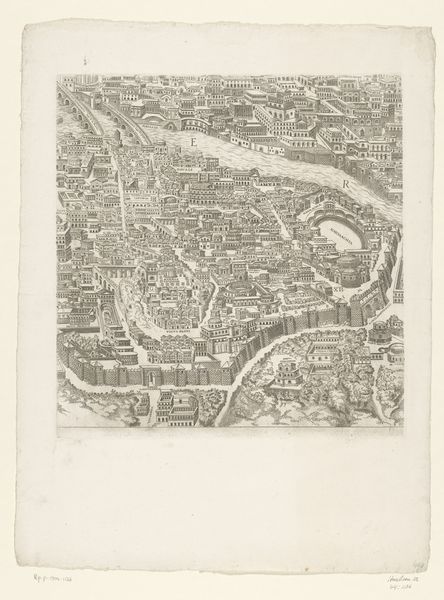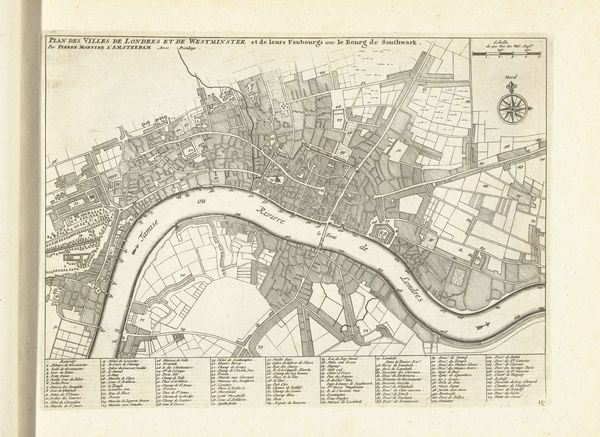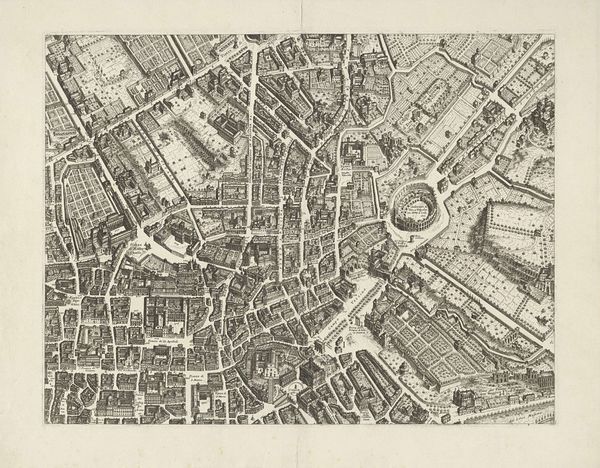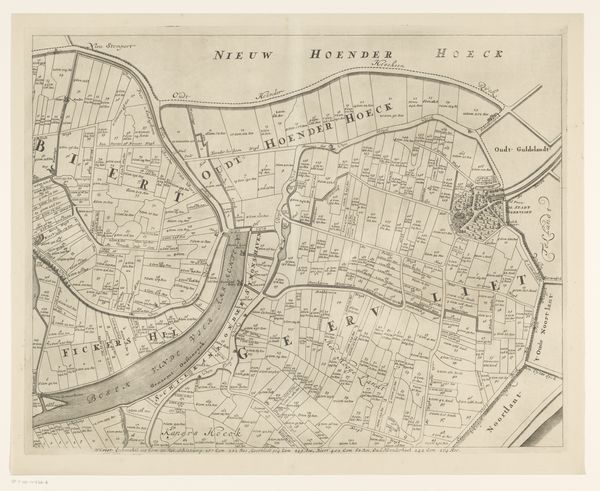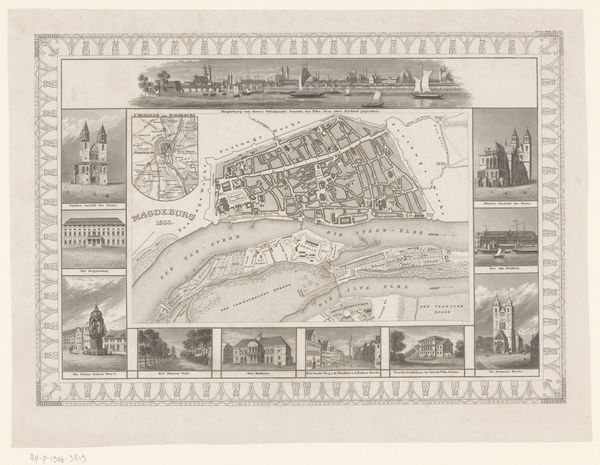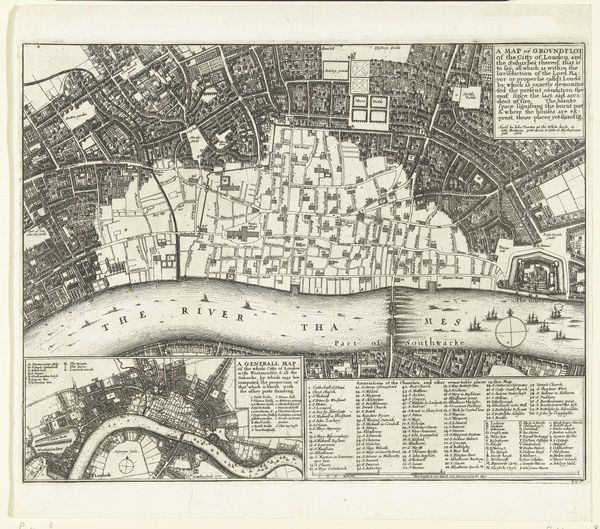
drawing, print, paper, engraving
#
drawing
# print
#
pen sketch
#
old engraving style
#
paper
#
cityscape
#
italian-renaissance
#
engraving
Dimensions: height 399 mm, width 509 mm
Copyright: Rijks Museum: Open Domain
Curator: The crisp, almost clinical quality of the engraving in Giovanni Battista Falda's 1676 "Plattegrond van de stad Rome" is striking. Look at the precision in each line, the clear delineation of space. What's your initial read? Editor: An almost dizzying array of detail; it evokes both a sense of vastness and the methodical labor required to produce it. It feels imposing, like an architect's precise vision asserting order over chaotic urban growth. Curator: It is indeed an imposing feat, particularly considering its production. This engraving would have demanded the skillful labor of craftsmen—from Falda himself designing and etching the plate, to the papermakers providing the ground for his work, and the printing presses that multiplied and circulated the image. This piece is a confluence of numerous hands. Editor: Precisely. Observe how the urban sprawl is dissected by the river, dividing not just space but perhaps society as well. There’s a certain geometric formalism evident in the buildings themselves—notice the use of sharp angles. What about its structure speaks to you? Curator: Considering the patronage systems in place at the time, it is not surprising that we might read Falda’s piece as a promotional document; a tool used to showcase Rome, enticing investment and tourism, both integral to the economic lifeblood of the city. We mustn't divorce this object from the world that fostered it, no matter how striking it might be as an image. Editor: I find it quite intriguing how Falda achieves such a sense of depth using only lines, how he transforms a flat plane into a seemingly boundless space, playing with perspective and intricate detail to simulate spatial recession. The sheer level of mastery in controlling the medium is worth celebrating. Curator: A worthwhile point indeed. By understanding who commissioned these kinds of urban 'portraits' and for what purpose, we begin to unlock how the mechanics of power played into what images gained cultural relevance. Editor: It truly showcases the power of line and form to both document and, perhaps, even subtly idealize its subject. It has provided new insight to consider its detailed and well-crafted composition further. Curator: Yes, let's both acknowledge the labor involved in creation while remaining ever critical towards its social life, just one possibility in thinking about an object from the Italian Renaissance.
Comments
No comments
Be the first to comment and join the conversation on the ultimate creative platform.

